
Emergent Materials
Scope & Guideline
Connecting Science and Sustainability through Innovative Research.
Introduction
Aims and Scopes
- Nanocomposites and Hybrid Materials:
Research on the synthesis, characterization, and application of nanocomposites and hybrid materials, particularly those that combine organic and inorganic components for enhanced properties. - Environmental Remediation:
Development of materials and technologies for the treatment and remediation of pollutants in water and air, including the use of green and biocompatible materials. - Energy Applications:
Exploration of materials for energy conversion and storage, including solar cells, batteries, and supercapacitors, with a focus on improving efficiency and sustainability. - Biomedical Applications:
Investigation of materials for medical applications, including drug delivery systems, tissue engineering scaffolds, and antimicrobial coatings. - Sensing and Detection Technologies:
Development of advanced materials and devices for sensing applications, particularly in detecting environmental pollutants and biological markers. - Functional Coatings and Thin Films:
Research on the fabrication and application of functional coatings and thin films for various applications, including corrosion resistance, optical properties, and electronic devices.
Trending and Emerging
- Sustainable and Green Materials:
A growing emphasis on the development of sustainable materials that utilize renewable resources and environmentally friendly processes is evident, aligning with global sustainability goals. - Advanced Nanomaterials for Energy Efficiency:
There is an increasing focus on nanomaterials that enhance energy efficiency in applications such as solar cells and batteries, driven by the global push for renewable energy solutions. - Biomaterials and Biocompatibility:
Research on biomaterials, particularly those that are biocompatible and suitable for medical applications, is expanding, reflecting advancements in healthcare technologies. - Smart and Responsive Materials:
Emerging studies on smart materials that respond to environmental stimuli, such as temperature or pH changes, indicate a trend towards multifunctional applications in various fields. - Integration of Machine Learning in Materials Science:
The application of machine learning techniques to predict material properties and optimize synthesis processes is gaining momentum, showcasing the intersection of computational science and materials research.
Declining or Waning
- Traditional Material Synthesis Techniques:
There is a noticeable decline in research focused on conventional material synthesis methods, as newer, more efficient techniques such as green synthesis and advanced nanofabrication methods gain popularity. - Non-renewable Resource Utilization:
Research involving materials derived from non-renewable resources is becoming less frequent, as the emphasis shifts towards sustainable materials derived from waste and renewable sources. - Basic Mechanical Properties of Materials:
Studies focusing solely on basic mechanical properties without integrating novel applications or interdisciplinary approaches are becoming less common, as the field moves towards more application-driven research.
Similar Journals
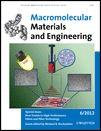
MACROMOLECULAR MATERIALS AND ENGINEERING
Fostering Global Dialogue in Chemical Engineering ExcellenceMACROMOLECULAR MATERIALS AND ENGINEERING, published by Wiley-VCH Verlag GmbH, is a distinguished open-access journal that since its inception in 1989 has been at the forefront of research in the fields of Chemical Engineering, Materials Chemistry, and Polymer Science. Recognized with a top-tier Q1 ranking in multiple categories for 2023, including Chemical Engineering and Organic Chemistry, this journal facilitates cutting-edge discoveries and advancements by providing a platform for authors to share innovative findings. With an impressive Scopus ranking, positioned within the top percentiles in several interdisciplinary categories, MACROMOLECULAR MATERIALS AND ENGINEERING is an essential resource for researchers, professionals, and students who are engaged in the development and application of macromolecular materials. As an open-access journal since 2023, it enhances accessibility and fosters collaboration within the global scientific community. The journal, headquartered in Germany, aims to publish high-quality, peer-reviewed articles that drive the scientific dialogue forward in the rapidly evolving fields of materials science and engineering.

ChemNanoMat
Exploring the Future of Nanoscale MaterialsChemNanoMat is a prestigious academic journal published by WILEY-V C H VERLAG GMBH, dedicated to the rapidly evolving fields of nanoscale materials and their applications in diverse areas such as biomaterials, energy engineering, and environmental sustainability. With the journal's ISSN 2199-692X and recognized quality, as evidenced by its Q2 rankings across multiple categories—including Biomaterials and Renewable Energy—ChemNanoMat serves as a crucial platform for researchers, professionals, and students to disseminate their findings and foster collaborations. Operating from Germany, the journal encourages the exploration of innovative materials solutions to meet tomorrow's challenges. While it does not currently offer open access options, it remains highly regarded in the academic community with a competitive impact factor that emphasizes its relevance and influence in guiding future research directions. Covering a broad scope from 2015 through 2024, ChemNanoMat is key for anyone invested in the advancement of materials chemistry and related scientific fields.
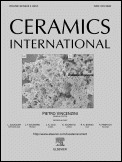
Ceramics International
Discovering the art and science of ceramics.Ceramics International is a premier journal published by ELSEVIER SCI LTD, focusing on advancing the field of materials science with a specific emphasis on ceramics and composites. With an impressive impact factor and a top-tier standing in several critical categories, including Q1 rankings in Ceramics and Composites, Electronic, Optical and Magnetic Materials, and Materials Chemistry, this journal serves as a crucial resource for researchers and professionals alike. Established in 1981, it has consistently showcased cutting-edge research in various domains, including surfaces, coatings, and process chemistry technologies, making it invaluable for those advancing theoretical and practical knowledge in these areas. While access is through subscription, the journal’s rich content, profound insights, and rigorous peer-review process ensure high-quality articles that contribute meaningfully to the scientific community. By fostering innovation and collaboration through rigorous research, Ceramics International stands out as an authoritative source for those dedicated to the evolution of materials science.

Advanced Materials Interfaces
Connecting Ideas, Innovating InterfacesAdvanced Materials Interfaces is a premier journal dedicated to the exploration and advancement of materials science, with particular emphasis on the interfacial phenomena that govern the behavior of materials in various engineering applications. Published by WILEY in the United Kingdom, this Open Access journal, established in 2014, has quickly ascended to a Q1 category ranking in both Mechanical Engineering and Mechanics of Materials as of 2023, reflecting its significant influence and excellence in the field. With impressive Scopus Ranks, such as #81 out of 672 in Mechanical Engineering and #58 out of 398 in Mechanics of Materials, it serves as a vital resource for researchers and practitioners aiming to push the boundaries of materials innovation. The journal provides unrestricted access to its cutting-edge research, promoting collaboration and dissemination of knowledge among the global scientific community, solidifying its role as a vital contributor to the ever-evolving landscape of materials engineering.
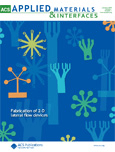
ACS Applied Materials & Interfaces
Advancing the Frontiers of Applied Materials and InterfacesACS Applied Materials & Interfaces, published by the American Chemical Society, stands as a leading journal in the field of applied materials, nanotechnology, and interdisciplinary research in medicine. With an impressive Impact Factor that places it in the Q1 category across Materials Science, Medicine, and Nanoscience and Nanotechnology, this journal consistently ranks among the top tier, evidencing its significance and influence in advancing scientific knowledge. The journal’s scopus ranking of 33 out of 463 in General Materials Science further underscores its critical role in disseminating innovative and high-quality research. Although it is not an open-access journal, a diverse range of access options is available, ensuring that vital research findings are accessible to a broad audience of researchers, professionals, and students. Targeting breakthroughs in the synthesis, characterization, and application of materials and interfaces, ACS Applied Materials & Interfaces serves as a pivotal platform for publishing cutting-edge studies essential for future technological advancements.

GIANT
Shaping the Future of Chemistry with Open Access Insights.GIANT is a pioneering open-access journal published by Elsevier that has rapidly established itself as a cornerstone in the fields of Chemistry, Materials Chemistry, Polymers and Plastics, and Surfaces, Coatings and Films. Since its inception in 2020, GIANT has been committed to disseminating cutting-edge research and facilitating scholarly communication in these dynamic areas. With a remarkable Q1 ranking across multiple categories, the journal reflects an impressive impact factor within the academic community, evidenced by its standing in the top 82nd percentile in several Scopus classifications. Based in the Netherlands at Radarweg 29, Amsterdam, GIANT embraces a global audience through its open-access model, ensuring that groundbreaking discoveries are accessible to researchers, professionals, and students alike. Fostering innovation, the journal strives to shape the future of materials science and chemistry, making significant contributions in an era characterized by rapid scientific advancement.
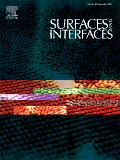
Surfaces and Interfaces
Connecting Disciplines through Surface InsightsSurfaces and Interfaces is a leading international journal published by Elsevier, dedicated to advancing the understanding of surface and interfacial phenomena across various disciplines, including chemistry, materials science, and physics. With an impressive impact factor placing it in the Q1 quartile for its categories as of 2023—spanning Chemistry, Condensed Matter Physics, and Surfaces, Coatings, and Films—this journal not only serves as a critical platform for innovative research but also reflects the dynamic nature of surface science in contemporary applications. The journal is indexed in Scopus, ranking 25th out of 132 in the Materials Science – Surfaces, Coatings and Films category, marking it in the top 19% of this prestigious field. Although it is not an open-access platform, the journal remains a vital source of curated academic material for researchers, professionals, and students seeking to deepen their knowledge and contribute to ongoing conversations in surface and interface science. Published from the heart of Europe in Amsterdam, Surfaces and Interfaces invites submissions that challenge conventional paradigms and explore the forefront of technology and materials.

University Politehnica of Bucharest Scientific Bulletin Series B-Chemistry and Materials Science
Exploring the Frontiers of Chemistry and Materials ScienceUniversity Politehnica of Bucharest Scientific Bulletin Series B-Chemistry and Materials Science is a renowned academic journal published by POLYTECHNIC UNIV BUCHAREST, situated in Romania. With the ISSN 1454-2331, this journal serves as a dynamic platform for the dissemination of innovative research findings in the fields of chemistry and materials science. Although classified in the Q4 quartile of both Chemistry (miscellaneous) and Materials Science (miscellaneous) categories for 2023, it has made a significant impact by providing a venue for emerging scholars and established researchers alike to share their work. The journal seeks to bridge theoretical insights and practical applications, promoting interdisciplinary dialogue and advancing scientific understanding. The scope encompasses a broad range of topics, reflecting contemporary advancements and challenges within the field. To facilitate access to its articles, while it does not currently operate under an open-access model, the journal remains committed to enhancing visibility through digital libraries. With a publication history spanning from 1999 to 2024, the journal is vital for all stakeholders—researchers, professionals, and students—seeking to stay abreast of developments in chemistry and materials science.
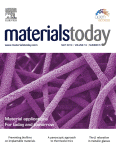
Materials Today
Advancing the Frontiers of Materials ScienceMaterials Today is a premier academic journal published by Elsevier Science Ltd, specializing in the dynamic fields of materials science, mechanical engineering, and condensed matter physics. Established in 1999, the journal has garnered an enviable reputation, consistently ranking in the Q1 category across multiple disciplines including mechanics of materials and general materials science, reflecting its influence and high-quality research output. With an impressive Scopus ranking—4th in both mechanical engineering and mechanics of materials, and 6th in condensed matter physics—Materials Today serves as an essential resource for researchers, professionals, and students seeking to stay at the forefront of developments in material innovations and applications. The journal is known for its commitment to publishing significant research findings and reviews, making it a vital platform for disseminating knowledge and fostering collaboration in the rapidly evolving materials field. Although it does not offer open access, its robust impact factor underscores the importance of the content published, ensuring wide visibility and citation among the academic community. Explore the rich tapestry of materials research with Materials Today, where groundbreaking insights pave the way for future technological advancements.

BULLETIN OF MATERIALS SCIENCE
Elevating Knowledge in Mechanics and MaterialsBulletin of Materials Science, published by the Indian Academy of Sciences, is a distinguished journal that has been contributing to the field of materials science since its inception in 1979. With an ISSN of 0250-4707 and E-ISSN 0973-7669, it provides a platform for researchers to share groundbreaking studies and advancements in the mechanics of materials and general materials science. As of 2023, the journal holds a respectable Q3 ranking in both the Materials Science (miscellaneous) and Mechanics of Materials categories, highlighting its competitive position in the academic landscape. Although the journal currently does not operate under an open access model, it remains a vital resource for professionals and students keen on exploring innovative material developments and methodologies. With a commitment to promoting high-quality research, the Bulletin of Materials Science features rigorous peer-review processes, making it an essential reference for anyone engaged in the materials science domain.